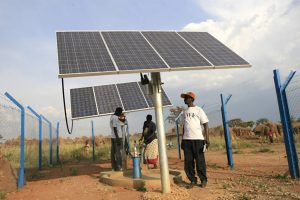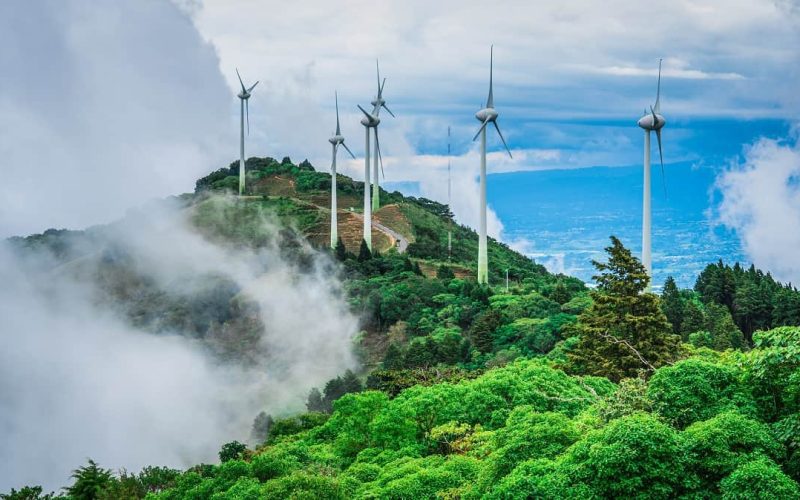Introduction to Clean Energy on DOE Lands
The Department of Energy (DOE) has taken a significant step towards a sustainable future by launching a clean energy initiative on reclaimed lands. This initiative aims to transform previously utilized DOE lands into hubs for clean energy generation. The benefits of expanding clean energy generation on DOE lands are multifaceted. By repurposing these lands for solar, wind, and other renewable energy projects, we can significantly reduce our dependence on fossil fuels, mitigate climate change, and promote environmental sustainability. Additionally, these projects can provide a reliable and clean source of energy, contributing to the overall energy security of the nation.
Historical Use of DOE Lands

DOE lands have historically been pivotal for the expansion of clean energy initiatives. Many of these sites were previously used for defense and energy research purposes, and their repurposing marks a significant shift towards a cleaner and more sustainable energy future. These historical DOE sites are now being repurposed for the clean energy initiative, demonstrating a commitment to transforming areas once associated with environmental degradation into symbols of ecological restoration and innovation. This transition not only preserves the historical significance of these lands but also aligns them with contemporary environmental goals.
Current Renewable Energy Projects
Currently, several renewable energy projects are being developed on DOE lands as part of the clean energy initiative. These lands are being repurposed for projects that include solar farms, wind turbines, and other renewable energy installations. The expansion of solar and wind projects on DOE-managed lands is particularly noteworthy. By utilizing these vast areas, we can harness natural resources more effectively and generate substantial amounts of clean energy. These projects not only contribute to the national grid but also serve as models for future renewable energy developments.
Technological Advances in Clean Energy
Technological advances are driving the DOE’s clean energy initiatives forward. DOE lands are crucial for the expansion of these initiatives, providing the necessary space and resources for the implementation of cutting-edge technologies. Innovations in solar panel efficiency, wind turbine design, and energy storage solutions are being tested and deployed on these lands. These technological advancements enable us to maximize energy generation, reduce costs, and improve the overall efficiency of clean energy systems. As a result, DOE lands are becoming testbeds for the latest clean energy technologies, pushing the boundaries of what is possible in renewable energy generation.
Environmental Impact of Clean Energy
The clean energy initiative on DOE lands significantly reduces the environmental footprint of energy production. By transitioning from fossil fuels to renewable energy sources, we can decrease greenhouse gas emissions, reduce air and water pollution, and conserve natural resources. This initiative promotes sustainable development on DOE lands, ensuring that these areas are used in an environmentally responsible manner. The restoration and repurposing of these lands for clean energy projects also contribute to habitat preservation and biodiversity conservation, further enhancing their ecological value.
Economic Benefits of Clean Energy
The clean energy initiative on DOE lands brings substantial economic benefits. It boosts local job creation and economic growth by providing employment opportunities in the construction, operation, and maintenance of renewable energy projects. Additionally, repurposing DOE lands for clean energy initiatives attracts investments from private and public sectors, stimulating local economies. These projects can also generate revenue for local communities through lease agreements and tax incentives, further contributing to economic development.
Policy and Regulatory Considerations
To support the clean energy initiative on DOE lands, it is essential to evaluate existing policies and develop new ones that facilitate the expansion of renewable energy projects. Policies that provide incentives for clean energy development, streamline permitting processes, and ensure environmental protection are crucial. It is also important to assess regulatory barriers that may hinder the implementation of clean energy initiatives. Addressing these barriers through policy reforms and regulatory adjustments can create a more conducive environment for the growth of renewable energy projects on DOE lands.
Challenges in Expanding Clean Energy

Expanding clean energy initiatives on DOE lands involves navigating complex regulatory frameworks. Implementing these projects requires compliance with various federal, state, and local regulations, which can be time-consuming and challenging. Balancing ecological impacts with the goals of the clean energy initiative is another critical challenge. While renewable energy projects offer significant environmental benefits, it is essential to ensure that their development does not adversely affect local ecosystems and wildlife. Careful planning and environmental assessments are necessary to achieve this balance.
Community Involvement in Clean Energy Projects
Community involvement is a key component of the clean energy initiative on DOE lands. Engaging with local communities ensures that their voices are heard and their concerns are addressed. Public engagement boosts support for clean energy projects, fostering a sense of ownership and collaboration. By involving communities in the planning and decision-making processes, we can build trust and create projects that align with local needs and values. This participatory approach enhances the social acceptance and long-term success of clean energy initiatives.
Future Outlook for Clean Energy on DOE Lands
The future outlook for clean energy on remediated DOE lands is promising. By accelerating the clean energy initiative, we can leverage these lands for sustainable use and contribute to the nation’s renewable energy goals. Continued investment in technology, policy support, and community engagement will be crucial for the success of these initiatives. As we move forward, the repurposing of DOE lands for clean energy projects will play a vital role in achieving a sustainable and resilient energy future.












